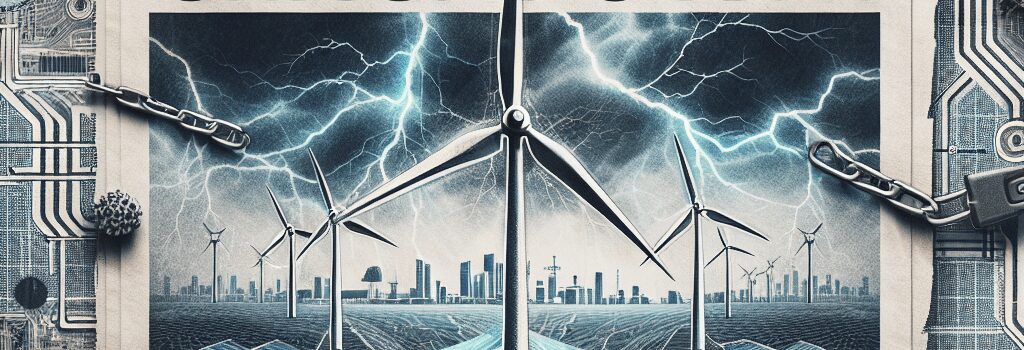Renewables Crackdown Threatens AI and Infrastructure Growth

Renewables Under Pressure
The US data center industry has issued stark warnings that the Trump administration’s recent suspension of renewable energy projects could stymie capacity expansion and undermine America’s leadership in artificial intelligence. Since January 2025, federal agencies have paused or cancelled onshore and offshore wind farm permits, halted solar leases on public lands and imposed tariffs on photovoltaic modules—moves that industry experts say will exacerbate power shortages and drive developers toward higher-emission sources.
- March 2025: Cancellation of Equinor’s $5 billion Empire Wind 3 offshore project by the Bureau of Ocean Energy Management.
- April 2025: Suspension of Department of Energy (DOE) loan guarantees for solar and storage integrations totaling 2 GW nationwide.
- June 2025: Introduction of new tariffs on imported polysilicon raising module costs by an estimated 12 percent.
AI’s Power Hunger and Technical Demands
Training large language models and vision transformers requires dense clusters of GPU or AI accelerators operating 24/7. A single hyperscale AI training pod based on NVIDIA DGX H100 can require up to 2.4 MW of continuous power, with peak loads spiking above 3 MW when cooling systems ramp up. Data centers aim for a Power Usage Effectiveness (PUE) below 1.10 to optimize energy efficiency, but prolonged reliance on legacy gas peaker plants—typically with PUE-equivalent heat rates above 7,500 Btu/kWh—can push overall carbon intensity higher.
According to the Center for Strategic and International Studies (CSIS), data center demand is projected to add 83.7 GW by 2030, roughly equivalent to the entire electricity consumption of Texas. Without rapid deployment of renewables—where utility-scale solar comes online in 6–12 months on average compared to 36–48 months for combined-cycle gas units—the industry faces potential build-out delays of 18–24 months.
Grid Modernization and Microgrids as a Solution
To mitigate bottlenecks, several operators are investing in advanced microgrid and distributed energy resource (DER) architectures. By integrating local solar-plus-storage systems with high-voltage direct current (HVDC) feeders, data centers can achieve islanding capability and sub-100 ms transition times during grid disturbances. In May 2025, DOE awarded $3 billion to fund five HVDC backbone projects designed to carry up to 5 GW across interconnections, enhancing resilience and curbing curtailments of solar and wind generation.
“Localized microgrids can deliver sub-30 ms switchover and improve overall PUE by 0.02 points,” says Dr. Emily Chen, senior grid specialist at the National Renewable Energy Laboratory (NREL). “This reduces reliance on peaker plants and supports firm, dispatchable clean energy.”
Small Modular Reactors and Nuclear Options
While nuclear power remains carbon-free, large-scale reactors face lengthy licensing under the Nuclear Regulatory Commission (NRC). As an alternative, many companies are evaluating Small Modular Reactors (SMRs) with output between 50 and 300 MW per unit. TerraPower and NuScale have submitted Design Certification Applications (DCAs), aiming for first deployments in 2028–2030. However, construction can still span 5–7 years from groundbreaking, limiting immediate impact on the 2030 demand surge.
Regulatory Landscape and Policy Developments
Legal challenges are mounting. In June 2025,17 Democratic state attorneys general filed suit to reinstate offshore wind leasing under the Outer Continental Shelf Lands Act. Meanwhile, Texas legislators debated HB 1234—a bill imposing new setback distances and permitting fees on solar farms. Similar measures are under consideration in Virginia and New York. Industry coalitions, including the Clean Energy Buyers Association (CEBA) and the Uptime Institute, are lobbying for streamlined interconnection standards and a national clean energy production tax credit.
Supply Chain Constraints and Lead Times
Major turbine and gas turbine manufacturers such as Siemens Gamesa, GE Vernova and Mitsubishi Power report delivery backlogs extending into 2029 for 2 × 1 combined-cycle units rated above 400 MW. Polysilicon and inverter shortages further compound PV project timelines. “If lead times remain at current levels, we estimate a shortfall of 25 GW of renewables capacity by 2027,” warns Rich Powell, CEO of CEBA. “That gap could force operators to absorb higher costs and revert to diesel gensets or grid-supplied natural gas.”
Conclusion: Path Forward
The data center sector’s rapid growth, fueled by demand for AI and cloud services, hinges on abundant, low-cost, low-carbon electricity. Industry leaders urge a balanced approach that pairs fossil-fuel backup with aggressive renewables deployment, grid upgrades and nuclear innovation. Failure to do so risks not only higher operating expenses and compromise of sustainability goals, but also cedes strategic advantage in the global AI race—where nations like China are accelerating grid modernization, launching 100 GW of renewable capacity annually and piloting modular nuclear units.
“To maintain US leadership, policymakers must align energy policy with digital infrastructure needs,” says Simon Ninan, Senior VP at Hitachi Vantara. “The clock is ticking.”